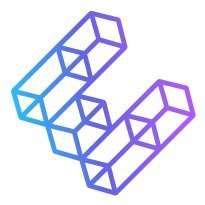Using DVT technology, validator management NFT, is the leading ether.fi undervalued by the market?
Author: Frontier Lab
Introduction
Ether.fi is dedicated to Ethereum staking and liquidity restaking, addressing the biggest pain point in the current Ethereum staking and restaking space: users lose control over their Ethereum after staking it. Therefore, Ether.fi aims to develop a non-custodial staking solution that allows users to enjoy staking and restaking rewards while maintaining control over their Ethereum.
Project Strength
Core Team
Mike Silagadze: Founder & CEO. A graduate of the University of Waterloo, Mike Silagadze began investing in the cryptocurrency industry in 2010. He previously founded Gadze Finance and served as CEO, and also founded Top Hat.
Chuck Morris: Chief Engineer. A graduate student from the University of Chicago, majoring in computer science. He has extensive experience in cryptocurrency development engineering teams.
Partners
Kiln: Provides infrastructure services for Ethereum.
DSRV: A company that offers blockchain infrastructure support, including node services and other technical support.
Chainnodes: A blockchain service provider focused on node operation and management.
Obol: A company focused on distributed trust protocols or decentralized technologies related to blockchain.
From the team and partner information disclosed by ether.fi, it is evident that its development team has extensive investment and development experience in the cryptocurrency industry and has established partnerships with several cryptocurrency infrastructure companies, gaining strong support in infrastructure building.
Funding Strength
Ether.fi has raised approximately $32.3 million through two rounds of funding.
Seed Round: In February 2023, Version One Ventures led the round, with Purpose Investments, North Island Ventures, Node Capital, Maelstrom, Kommune.one, Chapter One Ventures, and Arrington XRP Capital participating. The amount was $5.3 million.
Series A: In February 2024, Version One Ventures and OKX Ventures led the round, with White Star Capital, White Loop Capital, Stani Kulechov, Selini Capital, Sandeep Nailwal, North Island Ventures, Node Capital, and Matthew Howells-Barby participating. The amount was $27 million.
Version One Ventures and OKX Ventures are top investment institutions in the crypto industry. The participation of AAVE founder Stani Kulechov, Polygon founder Sandeep Nailwal, and Kraken founder Matthew Howells-Barby in ether.fi's funding indicates a high level of recognition from top industry figures.
Operating Model
Based on the amount of ETH and its LST tokens deposited by users, there are two categories: multiples of 32 ETH and its LST; other amounts of ETH and their LST tokens.
- When the amount of ETH and its LST tokens deposited by the user is a multiple of 32
Node operators submit bids to obtain the validator nodes allocated to them. Trusted node operators can submit a nominal bid to be marked as available. Untrusted node operators participate in the auction mechanism and are allocated validators based on the winning bid price. Depositors will deposit 32 ETH into the ether.fi deposit contract. This will trigger the auction mechanism and allocate a node operator to run the validator. It will also mint a withdrawal vault and two NFTs (T-NFT, B-NFT), granting ownership of the withdrawal vault. T-NFT represents 30 ETH, which is transferable at any time. B-NFT represents 2 ETH, which is bound by obligation. The only way to reclaim the 2 ETH is to exit the validator or completely withdraw. The validator encrypts the validator key using the public key of the winning node operator and submits it as an on-chain transaction. The node operator uses the decrypted validator key to start the validator. Subscribers (or node operators) can submit exit commands to exit the validator and deposit the subscribed ETH into the withdrawal vault. The subscriber can then burn the NFT to reclaim ETH after deducting fees.
The B-NFT is used to provide a deductible for price drop insurance (in the event of a price drop) and represents the responsibility for monitoring the performance of the validator node. Due to the increased risk and responsibility, the yield of B-NFT is higher than that of T-NFT.
- When the amount of ETH and its LST tokens deposited by the user is another amount
When the amount of ETH and its LST tokens deposited by the user is another amount. When the user's Ethereum amount is less than 32 or does not want to take on the responsibility of monitoring the validator node, they can participate in ether.fi staking by minting eETH in the NFT liquidity pool. The liquidity pool contract contains a mixed asset composed of ETH and T-NFT. When users deposit ETH into the liquidity pool, the pool mints eETH tokens and transfers them to the user. Holders of T-NFT can deposit T-NFT into the liquidity pool and mint eETH equal to the value of T-NFT. Market makers holding eETH can convert it to ETH in the liquidity pool at a 1:1 ratio, provided there is sufficient liquidity. If liquidity is insufficient, the conversion will trigger a validator exit. Users staking with B-NFT deposit their ETH into the pool and enter the queue for B-NFT allocation. When the amount of Ethereum in the liquidity pool exceeds the threshold, the next holder in the queue will be allocated. During this process, a private key is generated, and the staking process is triggered, with 32 ETH being staked in the pool, while two NFTs are minted: T-NFT enters the pool, and B-NFT goes to the bondholder. When the amount of ETH in the liquidity pool falls below the threshold, the earliest minted T-NFT will trigger an exit request. This exit request will record a timestamp and start a timer. If the timer expires and the validator has not exited, the value of the B-NFT holder will be gradually reduced. Node operators can receive rewards when exiting expired validators. When the validator exits, T-NFT and B-NFT will be burned, and ETH (after fees) will be deposited into the liquidity pool.
At the same time, to increase the staking rewards for stakers, ether.fi's design not only provides staking rewards but also establishes a node service market that allows stakers and node operators to register nodes, provide infrastructure services, and share service revenue. While users deposit funds in ether.fi and receive staking rewards, ether.fi will automatically restake the user's deposits to Eigenlayer for profit. Eigenlayer uses staked Ethereum to support various AVS and enhances staking rewards by establishing an economic security layer. The total amount of staking rewards will be distributed to stakers, node operators, and the protocol, accounting for 90%, 5%, and 5%, respectively. Users can earn Ethereum staking rewards, ether.fi loyalty points, restaking rewards (including EigenLayer points), and rewards for providing liquidity to DeFi protocols.
Distributed Validator Technology (DVT)
In ether.fi's white paper, Distributed Validator Technology (DVT) is introduced. DVT was created primarily to address the centralization of validators in Ethereum staking. In traditional Ethereum staking, a validator is typically designed to be managed by a single node operator, which presents two obvious problems:
If this node fails, it will affect the security and yield of the ETH staked in this validator;
If this node is unreliable or attacked, it may impact the performance and security of the validator. Therefore, the design of DVT allows multiple independent entities to jointly manage a single validator, dispersing the risk of a single point of failure.
The implementation of DVT technology is mainly achieved through upgrades and improvements in two aspects:
First, DVT implements key splitting, no longer controlled by a single key, but by dividing the validator's key into multiple parts, with each entity participating in the management of the validator holding only a portion of the key. Each operation requires the consensus of the majority of entities to proceed, effectively reducing the risks associated with a single node controlling the key;
Second, there must be clear contracts and agreements among DVT participants to define the responsibilities and rights of each participating entity, ensuring the fairness and transparency of the entire system.
In summary, ether.fi significantly reduces the centralization risk of existing nodes by introducing DVT technology, ensuring the security and fairness of stakers and participants.
Validator Management NFTization
In ether.fi's design, when creating each validator, two NFTs are generated, namely T-NFT and B-NFT. T-NFT represents 30 ETH, which is transferable at any time. B-NFT represents 2 ETH, which is bound by obligation and can only be returned when fully exited. The minted NFTs not only represent ownership of the funds staked in the validator but also contain all the key data required to manage and operate the validator. The NFTs include detailed information about the created validator, such as the node running the validator, physical location, node operator, and detailed information about the node service; NFT holders have control over the validator.
The NFT design of ether.fi is an upgraded version of the LST in previous LSD projects. It allows stakers to manage their validators in a more flexible and decentralized manner by holding NFTs. This approach also reduces the trust issue that previously required stakers to transfer their ETH to third parties.
Innovations Compared to Other Projects in the Same Track
Comparing ether.fi with other Restaking projects.
Security: The most obvious advantage of ether.fi over traditional staking projects is security. In traditional staking projects, users directly stake their ETH through the project to nodes, losing control over the keys at the same time. If the node acts maliciously or is attacked, the staker will suffer corresponding losses. Ether.fi aims to develop a non-custodial staking solution that allows stakers to control their keys and retain custody of their ETH while delegating staking to node operators, and achieves the effect of multiple independent entities jointly managing a single validator, thereby dispersing the risk of a single point of failure. Ether.fi minimizes the risks for users participating in Ethereum staking.
Exit Mechanism: In other Restaking projects, when users need to redeem their staked ETH or LST in the protocol, they must wait 7 days to redeem it. However, ether.fi offers a unique exit mechanism, allowing users to unstake eETH back to ETH. This means users can not only swap back to ETH through DEX but also choose to unstake 1:1 to redeem ETH, with a shorter waiting time. Moreover, ether.fi is the only protocol that supports direct exit from LRT, while other protocols like Curve and Balancer require LP pool exchanges for exits, but withdrawal times vary based on liquidity reserves.
In the crypto industry, especially for on-chain active users, the most concerning issue is the security of their assets, followed by yield. Ether.fi minimizes asset security concerns by using DVT technology and validator management NFTization. Additionally, it features a user-friendly exit staking mechanism, significantly reducing users' concerns when participating in the project.
Project Model
Business Model
The economic model of ether.fi consists of three roles: node operators, staking users, and Active Validator Service providers (AVS).
Node Operators: The node operators of ether.fi are primarily entities that can utilize ether.fi's infrastructure to provide high-quality services to stakers and other participants in the network. Node operators play a crucial role in ether.fi's economic model. First, users must stake their ETH or LST through node operators, who will mint NFTs for the stakers. Ether.fi charges a fee when minting or burning NFTs, which is one of its sources of revenue. Then, node operators will restake the already staked ETH to Eigenlayer for profit or provide services to AVS connected to ether.fi for revenue.
Staking Users: After staking their ETH in ether.fi, staking users will receive Ethereum rewards from node staking incentives, and primarily restake to Eigenlayer for profit while also providing services to AVS for additional income. Among the earnings obtained by staking users, 5% will be allocated to node operators, and 5% will be allocated to the ether.fi project, which is also one of ether.fi's sources of revenue.
Active Validator Service Providers (AVS): As a project in the Restaking track, ether.fi inevitably involves AVS. Although most Restaking projects currently connect their staked ETH to Eigenlayer to allow Eigenlayer to complete AVS connections for excess rewards, ether.fi plans to establish its own AVS ecosystem in the next step. AVS will be the source of excess earnings provided to staking users by the ether.fi project.
From the above analysis, it can be seen that ether.fi's revenue comes from:
Fees charged when minting or burning NFTs.
5% of the income earned by staking users.
Token Model
According to the white paper, the total supply of ETHFI is 1 billion tokens, with an initial supply of 115.2 million tokens, and the current circulation rate is 11.52%.
The distribution of ETHFI is as follows:
|--------------------|----------------------------| | Investors and Advisors | 325 million tokens, 32.5%, locked for 2 years, linear unlock | | Core Contributors of the Team | 232.6 million tokens, 23.26%, locked for 3 years, linear unlock | | DAO Treasury | 272.4 million tokens, 27.24% | | Airdrop | 110 million tokens, 11% | | Providing Liquidity | 30 million tokens, 3% | | Binance Launchpool | 20 million tokens, 2% | | Protocol Guild | 10 million tokens, 1% |
Token Empowerment
According to the white paper, the uses of ETHFI in ether.fi are as follows:
Pay Protocol Fees: Users need to use ETHFI to pay for operations and transactions in ether.fi.
Project Incentives: Rewards for users participating in staking and running nodes.
Participate in Governance: Holding ETHFI tokens allows participation in project governance.
Value Assessment of ETHFI
According to the white paper, there are no scenarios of centralized destruction or periodic destruction of ETHFI in the ether.fi project.
The limited empowerment of ETHFI is a significant drawback of the ether.fi project, as it does not incorporate a staking mechanism, thereby reducing the key point of locking ETHFI tokens to increase project value. However, based on the distribution of ETHFI in the white paper, the most influential parts of the token market are the investors and advisors, and the core contributors of the team, which together account for 55.76% of the total supply. Although this proportion is relatively high, based on their lock-up periods, most tokens will not be released until after March 2026, so it will not temporarily affect the circulation rate of the tokens.
The future trend of ETHFI will depend more on whether the price of ETH can continue to rise after the approval of the spot ETF and whether ether.fi can connect to more AVS in the future to provide additional ETH staking rewards for ether.fi's stakers.
TVL


From the figures, it can be seen that ether.fi's TVL has reached $5.88 billion, currently ranking first in the Restaking track. It is also evident that ether.fi's TVL has been rapidly increasing since 2024.
APY

We can see from ether.fi's official website that the APY of ether.fi has reached 14.4%, which is very attractive to staking users.
Top Ten Holders

Among the top ten holding addresses are ether.fi's DAO treasury, Binance, and OKEX's official addresses, with the remaining holdings accounting for 7.07%. The number of ETHFI is 77.07 million, and the current circulation is 115.2 million, occupying 66.91% of the circulation, indicating that a large portion of the tokens is concentrated in the hands of whales.
Project Risks
The ETHFI token, aside from being the governance token of ether.fi, primarily serves the purpose of users paying fees when using the project and distributing rewards to stakers and node operators. Although the current unlock amount of ETHFI tokens is not high, and the lock-up periods for the largest proportions of investors and advisors, as well as core contributors of the team, are reasonable, there will not be significant unlocks in this bull market. However, the lack of buyback and staking mechanisms for ETHFI leads to an increasing circulation of ETHFI, with no mechanism to achieve deflation, which may affect the price increase to some extent.
Although ether.fi has addressed the advantages of stakers retaining ownership of their assets and being able to exit in a timely manner compared to other Restaking projects, the main focus of a Restaking project is still to increase the real additional earnings of staking users. Currently, ether.fi, like other Restaking projects, relies on Eigenlayer to connect staked tokens to Eigenlayer for AVS active validation services. Although it plans to launch its own AVS active validation service this year, the uncertainty of whether other projects will use ether.fi remains high. If this is not realized, it could have a significant negative impact on the token price.
Conclusion
Ether.fi's development direction is dedicated to Ethereum staking and liquidity restaking. By adopting DVT technology and validator management NFTization, it addresses the common issue in the Ethereum staking and liquidity restaking space where users lose control over their Ethereum after staking. It also ensures that stakers maintain control over their keys and enables multiple independent entities to jointly manage a single validator, effectively resolving the centralization risk for stakers. Moreover, ether.fi is the only protocol in the Restaking track that allows users to directly exit LRT. Thus, ether.fi holds a significant advantage in the Restaking track, currently ranking first in TVL.
However, ether.fi's token economics are overly simplistic, lacking a staking mechanism and destruction mechanism, leading to an increasing circulation of tokens, which indirectly affects the price increase of the tokens. Although ether.fi plans to launch its own AVS active validation service, whether it can attract other projects remains uncertain. If this is not achieved, it will have a considerable negative impact on the token price. The specific effects remain to be observed.
In summary, the ether.fi project, through its unique DVT technology and validator management NFTization mechanism, resolves the issue of losing control over Ethereum after staking in traditional staking. Its LRT exit mechanism is also very reasonable and has gained recognition from users. It addresses users' concerns regarding asset security, which is the most important aspect for on-chain users, while also solving common industry problems. Additionally, with the recent approval of the spot ETF for Ethereum, if ETH can see a good increase in price during the upcoming bull market, ether.fi, based on Ethereum, is bound to perform exceptionally well.












